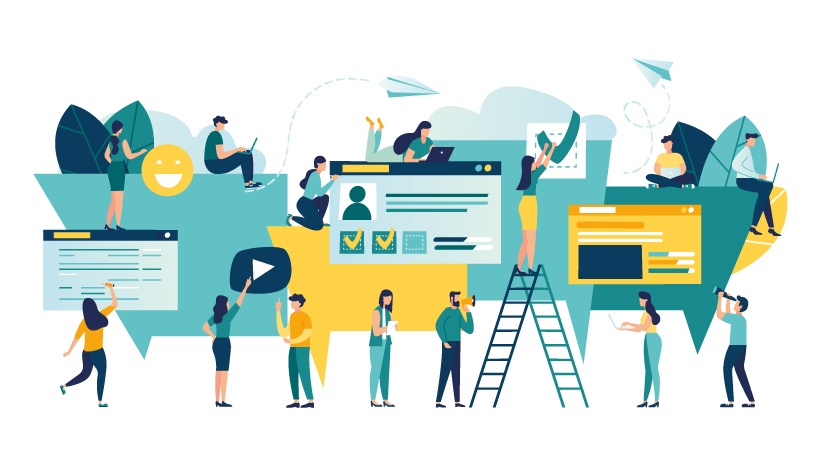From Alpha To Gold: eLearning's Development Path
eLearning is a vital tool in Learning and Development (L&D), offering a flexible and efficient method of delivering learning and training. It’s not just about compiling information, but about designing an experience that facilitates learning. Mastering eLearning content development allows L&D professionals to create engaging, effective learning materials that cater to diverse learning needs.
To ensure the course is effective, a systematic approach is required. One such approach is the ADDIE model, which stands for analyze, design, develop, implement, and evaluate. The alpha, beta, and gold stages, which fall under the development stage of ADDIE, provide a structured pathway from the initial idea to the final eLearning course.
The alpha, beta, and gold stages are more than just steps. They are industry practices followed by leading eLearning content development providers. The alpha, beta, and gold stages streamline the development process, ensuring timely project delivery that benefits all stakeholders. By saving time and aligning with project goals, this efficient approach becomes a key aspect of mastering eLearning content development.
Preparatory Steps For Setting The Stage
Before diving into the alpha stage, there are a few crucial steps that need to be completed. These steps lay the groundwork for the development process and ensure a smooth transition into the alpha stage.
- Defining the course outlines
The first step is to define the course outlines. This involves determining the structure of the course, the topics to be covered, and the sequence in which they will be presented. - Defining the course objectives
The next step is to define the course objectives. These are the learning outcomes that the course aims to achieve. The objectives should be specific, measurable, achievable, relevant, and time-bound (SMART). - Collecting content from the client
Once the course outlines and objectives have been defined, the next step is to collect all the necessary content from the client. This could include text, images, videos, and other multimedia elements. - Organizing the collected content
After collecting the content, it’s important to organize it in a way that’s easy to access and use during the development process. This might involve categorizing the content based on the course outlines.
Stages Of eLearning Content Development
Stage 1: Alpha
- Focus
Establishing course foundation
The alpha stage is the beginning of eLearning content development. It’s like creating a blueprint for a building. In this stage, the basic layout of the eLearning course is designed. This includes the structure of the course, and the learning objectives it aims to fulfil. The goal is to create a rough draft of what the final course will look like.
This draft is then reviewed by the team and the client, and their feedback is used to make improvements. This stage is crucial as it sets the foundation for the rest of the development process. Any improvements needed on the alpha version are noted for the next stage of development. In this stage, the focus is on creating a strong foundation for the eLearning course, getting the basics right, and setting the stage for the next stages of development. This stage consists of:
- Developing the content in collaboration with the Subject Matter Expert (SME).
- Deciding on the content format to include in the course, including videos, exercises, knowledge checks etc.
- Creating a basic prototype to visualize the course design.
- Anticipating potential challenges that might arise during the development process and creating backup plans.
- Incorporating additional elements to enhance learner engagement, such as gamification, storytelling, and scenarios [1].
- Drafting initial voice-over scripts.
- Brainstorming and outlining the foundational concepts for basic animations.
- Drafting initial video concepts.
- Initiating the course authoring process.
Stage 2: Beta
- Focus
Developing and testing
The beta stage is the second stage in the eLearning content development process. This phase is all about developing and enhancing the alpha version.
During the beta phase, the feedback and suggestions received from the alpha version are implemented. This could mean anything from minor adjustments to significant changes that may require revisiting the Instructional Design strategy. The beta version is more polished and closer to the final product. It includes semi-finished to finished images, videos, interactive elements, and even the first voice-overs. The aim is to improve the quality of the eLearning course and ensure it meets the learning objectives effectively.
Once the beta version is ready, it undergoes another round of reviews and testing. Any issues identified at this stage, such as technical glitches, content inaccuracies, or usability problems, are rectified before moving to the next stage. This stage consists of:
- Revisiting your storyboard to ensure it aligns with the feedback received.
- Reviewing the course navigation to ensure it is intuitive and user-friendly.
- Ensuring consistency in design, language, and messaging throughout the course.
- Developing voice-overs based on the alpha voice-over script draft, ensuring they are clear.
- Developing animations that align with the subject matter and testing them to ensure they are error-free.
- Developing and testing video to integrate into the course.
- Authoring the course in detail based on alpha feedback to refine and enrich the learning experience.
Stage 3: Gold
- Focus
Launch preparation
The final stage in the eLearning content development process is the gold stage. This phase is all about finalizing the eLearning course and preparing it for delivery.
The gold stage begins after the beta version has been thoroughly reviewed and all necessary changes have been made. The gold version is the final product, ready to be rolled out to the learners. At this stage, all the multimedia elements, such as graphics, animations, and voice-overs, are ready to be launched. The course is fully functional, with all assessments and tracking mechanisms in place and interactive elements available to increase the interactivity level.
The gold version undergoes a final round of quality assurance testing. This includes functionality testing, compatibility testing, and user acceptance testing. Any bugs identified at this stage are fixed, and the course is tested again to ensure it is error-free. Once the gold version passes all tests, it is ready for deployment. It is uploaded to the Learning Management System (LMS), and access is provided to the learners. This stage consists of:
- Ensuring the course is compatible with the Learning Management Systems.
- Creating a launch strategy for the eLearning course that involves incorporating L&D marketing techniques into the announcement plan.
- Preparing user guides or FAQs to help learners navigate the course.
- Setting up a post-launch evaluation process to assess the effectiveness of the course.
- Integrating the final voice-over to enhance the auditory aspects of the course.
- Refining and perfecting the final animations to align seamlessly with the course content.
- Integrating and perfecting final video content for an enhanced video-based learning experience.
- Making final adjustments within the authoring tool to ensure a flawless presentation.
Tips For Effective eLearning Content Development
Creating effective eLearning content is a complex process, but understanding the alpha, beta, and gold stages can make it more manageable. Here are some practical tips:
- Plan ahead
Start with a detailed project plan. Identify your learning objectives, target audience, and course content. Use project management tools to organize tasks, deadlines, and responsibilities. - Involve SMEs
Identify Subject Matter Experts in your organization or network. Schedule regular meetings with them to discuss course content. Use their feedback to ensure accuracy and relevance. - Use the right tools
There are numerous eLearning authoring tools available in the market. Choose the one that best fits your needs and budget. - Test regularly
Develop a testing schedule from the start. Include different types of testing like functionality testing of interactive elements, compatibility testing on different devices and browsers, and user acceptance testing with a small group of learners. Use the feedback from these tests to improve your course. - Collect feedback
Collecting feedback during the development phase is crucial for developing the course. Utilizing methods like peer reviews, remote user testing, prototype testing, and expert reviews helps ensure that the course aligns with the course objective and maintains high-quality standards. - Keep updating
Based on the feedback collected in the development phase, make necessary updates to the course content. This could include updating information, adding new resources, or improving the User Interface. - Time management
Effective time management is crucial in eLearning content development. Use project management software to track progress and manage timelines. Set realistic deadlines for each task and stick to them. - Project management
Use project management principles to oversee the entire development process. This includes defining the project scope, setting goals, planning, executing, monitoring progress, and closing the project.
Final Thoughts
The next step is to reflect on your current eLearning content development process. Identify which aspects of the alpha, beta, and gold stages are already present and which ones need to be incorporated. The insights from this article should serve as a guide. The goal is to align the current process with these stages to ensure a systematic and effective approach to eLearning content development. If the need arises, outsourcing the eLearning content to professional eLearning content developers can be a strategic move. They bring specialized skills and can help create high-quality, engaging content, ensuring the delivery of effective eLearning courses.
References:
[1] Why Corporate e-Learning Solutions need Scenario-Based Learning










